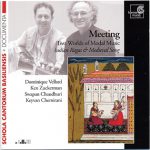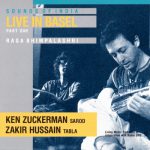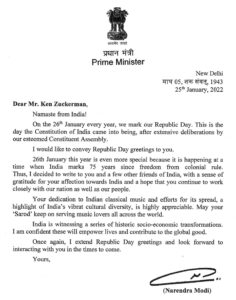Meeting Two Worlds of Modal Music
The musical traditions of the European Middle Ages and of North India, in spite of their many differences, have common roots going back far into the past. This can be seen especially in the organization of compositions according to the melodic modes. Internationally renowned specialists from the Schola Cantorum Basiliensis and of the Indian classical tradition here build a musical bridge between these cultures. Structure and improvisation, sensual melodies and complex rhythms, virtuosity and passion mark this fascinating meeting of two worlds!
This program offers a rare opportunity to experience two different musical worlds in dialogue: the reconstructed musical culture of the European Middle Ages, and the ancient but still continuous tradition of North Indian classical music – two worlds that are indeed separated with respect to time and geography, and yet still linked by common characteristic features.
The classical tradition of North Indian music, whose origins can be traced back to antiquity, is marked both by a strong adherence to its own origins and an openness to influences from other cultures. The forms that are still practiced today emerged from a fusion of Hindu and Islamic traditions, which reached their greatest blossoming in the sixteenth century during the reign of the Mogul emperor Akbar (1556-1605). North Indian music is based on the creative interplay of raga (melody) and tala (rhythm). The largely improvised performances are based on both complex melodic models and traditional compositions, which are passed down over generations from teacher to pupil. A delicate balance is always maintained between the proportion of improvised melodic and rhythmic expressions and the given modal structures and rhythmic cycles. This interplay between the traditional frameworks and the spontaneous expression also enables an active dialogue with the listener, who is subtly led through both the familiar and unexplored territory of the modal and rhythmic landscape.
European art music of the Middle Ages, seemingly far removed and accessible only by means of written documents, has clearly recognizable roots in Eastern traditions. So it is not surprising that parallels can also be established with Indian musical culture. In both cultures, the music is based on complex structures. On the performance level, too, there is clear evidence – as in Indian music – of individual creativity through improvisation. In addition to this there is the mutual characteristic of tonal organization, since a central organizational feature of both musical traditions are the melodic modes, through which structural tones, characteristic phrases, and to a certain extent even emotional content, is developed. Although the tonal systems are different (roughly stated: seven whole- and half-tone steps in Western music as compared to microintervals and groups of tones in Indian music), common features can however, be recognized in the means of musical fashioning. In the music of the Middle Ages, too, there are subtle nuances that can bring about highly differ- entiated effects, as Dominique Vellard demonstrates in the heartfelt songs of the 14th century Parisian musician Jehan de Lescurel. Even the so-called Gregorian chant knows emphatic moments, as the offertory Universi qui te expectant and an Alleluia demonstrate. And the intense relationship between music and text is highlighted in both the simple Sephardic song Ven querida and the expansive song of praise to Mary by Hildegard von Bingen.
Sample Program
Mode in D (Dorian)
Anonym – Natali regis gloriae“ (Conductus, 12th c.)
Ken Zuckerman – Composition and improvisations in dorian mode
Gregorian chant – Universi qui te expectant“ (gradual)
Traditional Indian – Raga Bhimpalashri
Mode in C
Traditional Indian Raga “Pahari”
Gregorian chant “Alleluia, Angelus Domini”
Traditional Indian * Raga “Manj Khammaj” – introduction
Jehan de Lescurel (beg. 14th c.) “Bont’s, sen, valours et pris” (ballad, lydian)
Traditional Indian ** Raga “Manj Khammaj” – continued
Traditional Indian/Persian tabla/zarb – solo
12 Traditional Indian ** Raga “Manj Khammaj” – conclusion
Mode in F (Lydian)
13 Traditional Indian ** Raga “Bihag” – introduction
14 Raga “Bihag” – continued and conclusion
15 Anonymous Istampita “˜Principio di virtu”
(source: London, British Library, MS Add. 29987)
16 Jehan de Lescurel “Douce amour, confortez moi” (virelais)
Mode in E (Phrygian)
17 Sephardic “Ven querida”
18 Traditional Indian ** Raga “Bhairavi”
19 Hildegard von Bingen (1098-1179) “O splendidissima gemma” –
20 Traditional Indian ** Raga “Bhairavi”
21 Raga “Bhairavi” – continued
22 Raga “Bhairavi” – conclusion






